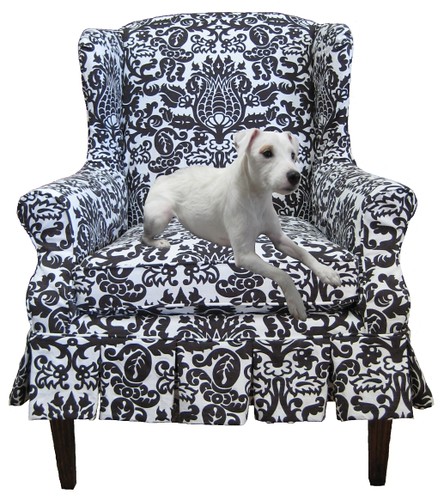From construction materials to furniture and cleaning products, our homes contain many toxic substances that affect our health. You can improve the quality of your health by making informed decisions about how your home is designed, what products are used to build it, what products you put in it and how you maintain it. Here are several tips for making your home healthier and safer for you & your family.
10 Steps to Creating a Healthy Indoor Environment
Step 1: If you have allergies, then carpet is not what you want for flooring. Carpet captures dust, dust mites, food, and mildew and gives it a place to breed and grow. This is what will irritate your allergies and make you sick. Replace your carpet with hardwood flooring or tile to eliminate the breeding ground. Hardwood and tile flooring is much easier to clean and maintain. It also has a longer life span than carpet and won’t need replacing as soon.
Step 2: Cotton is the most pesticide intensive product grown today. 25% of all pesticides used globally last year were used to grow cotton. There are currently 83 active ingredients in pesticides known to cause cancer in animals and humans. The alternative is to choose products that are made from organic cotton or linen. These fabrics are not treated with pesticides and are safer not only for us humans, but for the planet as well. You can find organic fabrics that will look beautiful and be durable for upholstering or slipcovering furniture, bedding, throw pillows and curtains.
Step 3: Indoor air is three times more polluted than outdoor air, and according to the EPA, is considered one of the top 5 hazards to human health. Paints and finishes are among the leading causes. Before you start a painting project at home, research paint companies with Non or Low VOC paints like Devine Green or Sally Fretwell Paints. VOC stands for Volatile Organic Compounds. These chemicals are dangerous to breathe and typically off-gas for many years after you have painted. Visit http://www.devinepaints.com or http://www.sallyfretwell.comfor more information on quality Non and Low VOC paints.
Step 4: Buy or finish wood furniture with natural finishes like beeswax, natural non-toxic Tung oil or linseed oil instead of polyurethane. Household varnishes such as polyurethane often contain benzene, toluene, xylene and ethylene glycol ethers among other things. The side effects and illnesses caused by these chemicals read like a barrage of horror stories: Nerve damage, respiratory problems, headaches, coma, vomiting, kidney failure, reproductive problems, memory loss and death. This isn’t even a complete list.
Step 5: When designing or remodeling your home, add as many windows as you can to provide as much natural light as you can. This will reduce your electric bill, provide adequate lighting for tasks and will help to create a healthier mental environment to live in. You need air exchange with the outside as well, so more windows will help to circulate fresh air through your home.
Step 6: Get rid of the clutter! This in not only visually disruptive and stressful, but it creates areas for dust to gather and encouraging dust mites. Removing the clutter will make it easier to keep the house clean too. And if the house is easier to clean, it won’t be such an ordeal.
Step 7: Use eco-friendly cleaning products. Conventional cleaning products contain some of the most toxic chemicals in your home. Your best option for green cleaners is to use some of the same ingredients your grandmother used to keep her home spic and span. Lemon juice can cut grease, remove stains and be used to clean windows. Dilute Castile soap with water and use it as an all-purpose cleaner. A little goes a long way! These Eco-friendly products are human-friendly as well. They will be less agitating to the skin and sinuses.
Step 8: Let your pets have their own beds instead of sharing yours. I know this may be a hard habit to break, but pets bring many germs & bacteria from outside into your home. If you give them their own “doggie bed” you can keep the dirt and germs contained. Make sure you get a washable pet cover for their bed. Wash it regularly to keep germs away.
Step 9: Avoiding products made of particle board. Particle board emits formaldehyde as it ages. The new cabinet smell is chemicals off-gassing; it continues to off- gas long after the new product smell is gone. Ready to assemble furniture such as laminated furniture found at Big Box and Office Supply stores is made from particle board. Try instead real wood products made here in the USA. There are several great manufacturers right here in the Southeast that still make affordable all wood products. Check out Southern Craftsmens Guild or Ron Fisher Furniture.
Step 10: Take steps to improve air quality and freshen the air in your home by introducing live plants such as ivy, spider plants and peace lily. All have the natural quality of absorbing formaldehyde and other unhealthy chemicals. They help to produce nice clean oxygen. Open your windows and doors every few weeks for a few hours (not on a bad pollen day) to completely exchange the air in your home with fresh air from outside. This eliminates toxins that are off-gassing from furniture, cabinetry, paint and carpet, which are building up in your home and recirculating in your HVAC system.
These are just a few steps to create healthy indoor living. Check online at
www.planetgreen.com or www.yahoogreen.com for more recommendations on safe & healthy products for your home & health. Now take a deep breath and enjoy your new healthy home!
© July 2008 by Layla S. Altman. May not be reproduced without permission



